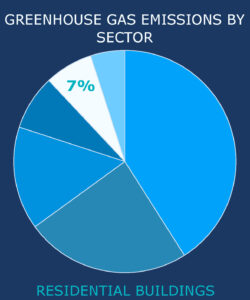Many of California’s existing homes and small businesses are wasting energy and exacerbating climate change. These entities in fact present the best opportunities for retrofits because they produce the majority of greenhouse gas emissions from buildings. Policy-makers should direct their efforts to retrofitting these existing buildings because many of them were built before the state introduced energy efficiency building standards in the late 1970s. While these standards ensure that new structures contain energy efficiency features, efficiency improvements in existing buildings lag behind.
